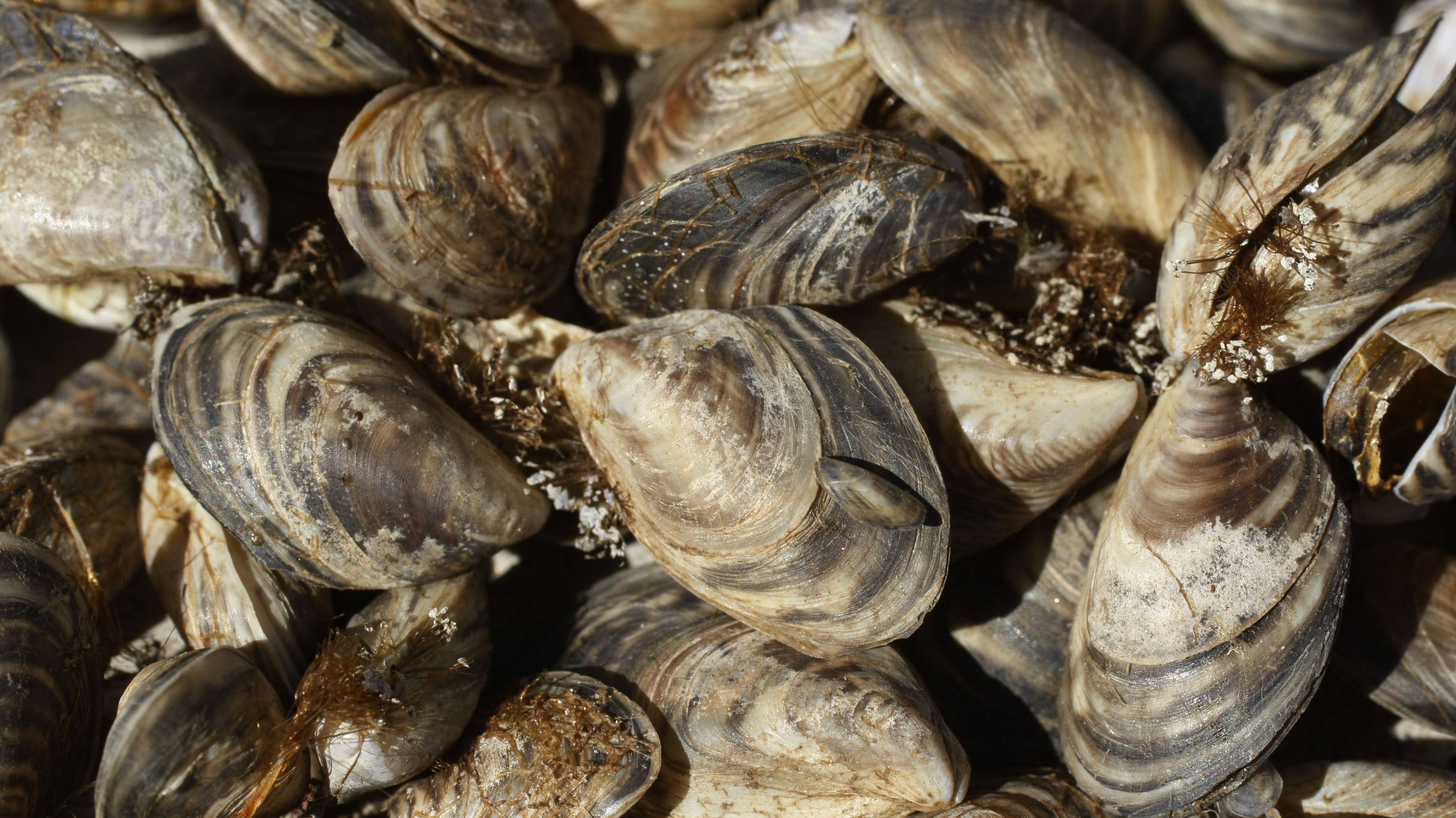


Clair River, one diet study found zebra mussels to be the most abundant food item in lake sturgeon stomachs. When those sturgeon grow up, however, zebra mussels can become a food source. The small crevasses created by zebra mussel beds give macroinvertebrates plenty of places to hide, significantly affecting a juvenile sturgeon’s foraging success. Expansive beds of zebra mussels can complicate this search for food. This allows them to easily vacuum up the small macroinvtebrates that they depend on for food. Zebra Mussels: Juvenile sturgeon like to hang out in sandy and silty habitats. Wisconsin Sea Grant’s very own Phil Moy is involved in this project, and between the barrier and the boat wash station, Lake Michigan’s unwanted invaders likely won’t be advancing up the Fox River any time soon. Another option for boaters trying to navigate around the Rapide Croche Lock will be a system that lifts and cleans boats as they move upstream. Anglers and recreational boaters could still move invasive species above the Rapide Croche barrier, so it is important that any boater using the system practice the big three clean boat steps – clean, drain, dry. Throughout the rehabilitation of the Fox River lock and dam system, this barrier will remain in place so that aquatic invasive species cannot naturally disperse upstream to Lake Winnebago. This barrier has been effective at keeping the sea lamprey at bay, as well as trapping other invasives, including the round goby, in Lake Michigan.
Quaqua mussel free#
The Winnebago system is currently free of sea lampreys, thanks to a barrier at Rapide Croche Lock and Dam on the Fox River. Young lake sturgeon are especially vulnerable to sea lamprey attacks. The bony scutes the sturgeon “wears” as armor instead of normal scales offers sturgeon some protection from lamprey attacks, but the toothy predator can find the fleshy areas of the lake sturgeon (the underside of the fish, the base of the fins) and the attacks can be fatal. Sea Lamprey: The salmonids of the Great Lakes tend to be the prey of choice for sea lamprey, but that doesn’t mean a lamprey won’t try to latch onto a lake sturgeon. Luckily, the Winnebago System is currently round-goby free and hopefully this efficient egg predator doesn’t count the lake as its newest conquest. Researchers put eggs in “predator exclusion chambers” on the reef and saw the hatch rate jump to 16 percent. While lake sturgeon reproduction had been observed on those reefs, Michigan Department of Natural Resources researchers were observing an egg hatch rate of less than 1 percent, likely due to egg predation by round goby. Clair River, round goby density has been documented at 25 fish/m 2. On lake sturgeon spawning reefs in the St. Clair River, the river that drains Lake Huron into Lake St.

Round goby: While research has suggested that round goby prey upon fish eggs at a similar rate as native benthic fish, their high abundances within the Great Lakes Region has hindered lake sturgeon reproduction in some places. This way, you’ll have something interesting to think about while staring at the green glow coming from the hole in the lake, waiting for a sturgeon to swim by. Talking about aquatic invasive species when everyone’s thinking sturgeon seems like a losing strategy, so let’s try a “if you can’t beat them, join them!” mindset and discuss a few ways that lake sturgeon are affected by aquatic invasive species.
Quaqua mussel full#
The Lake Winnebago sturgeon spearing season is in full swing, and sturgeon news is everywhere.


 0 kommentar(er)
0 kommentar(er)
